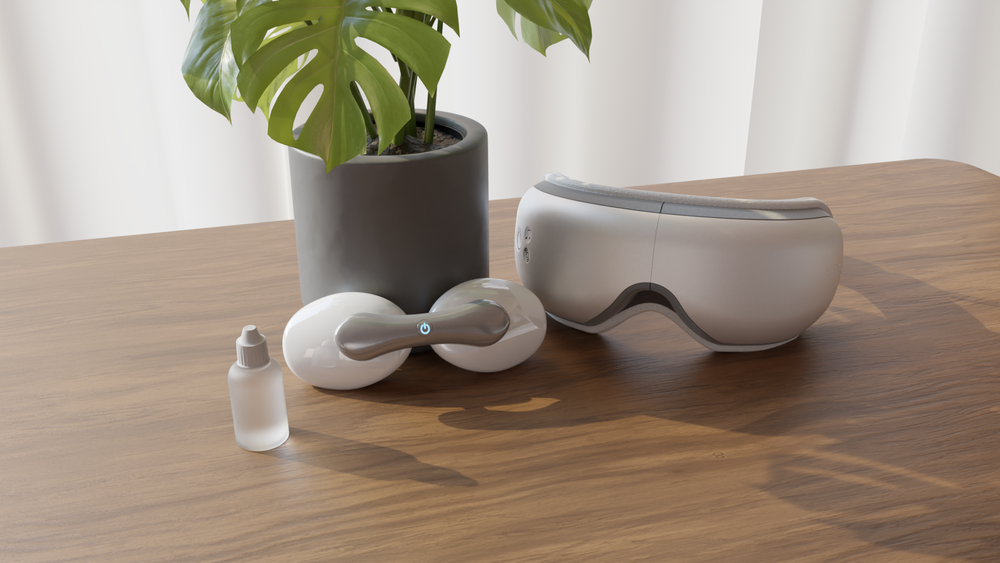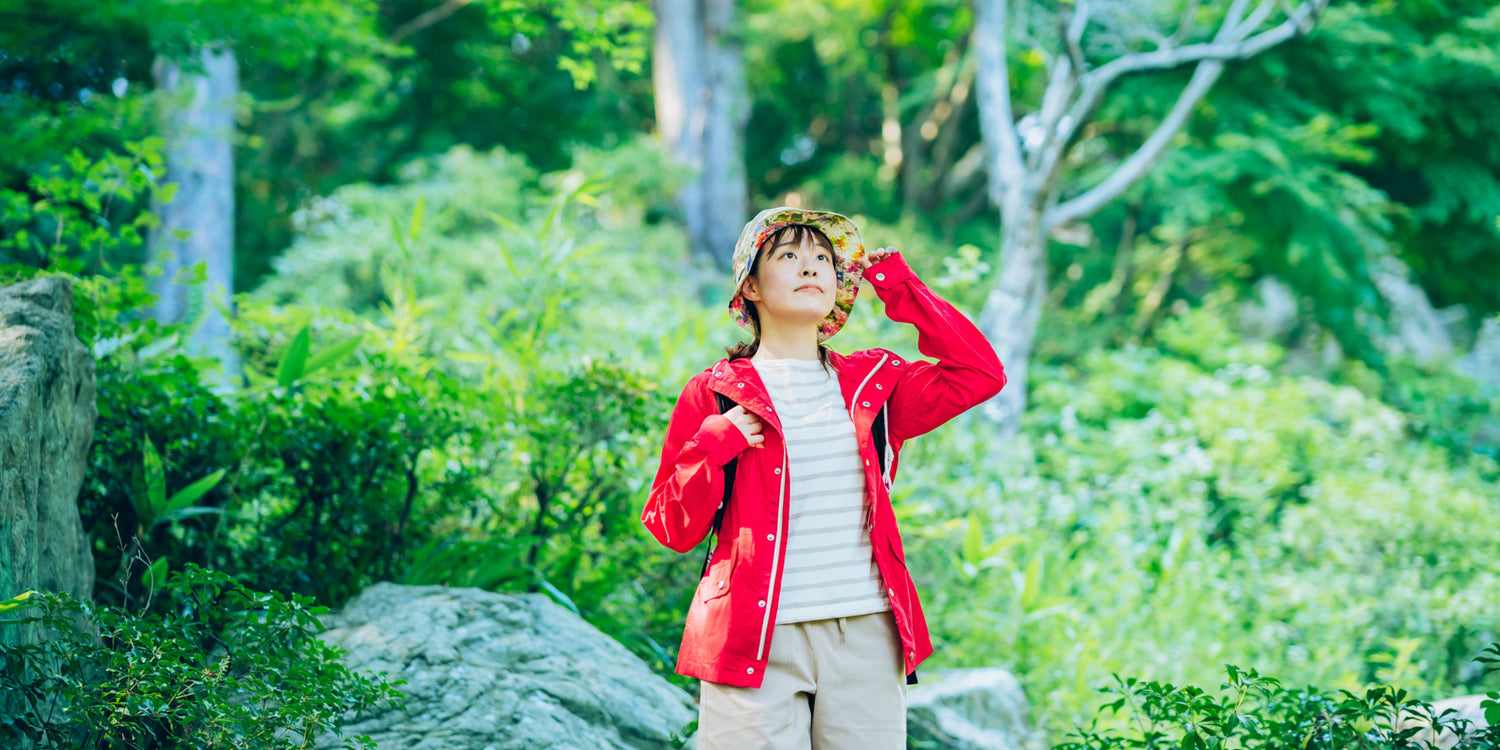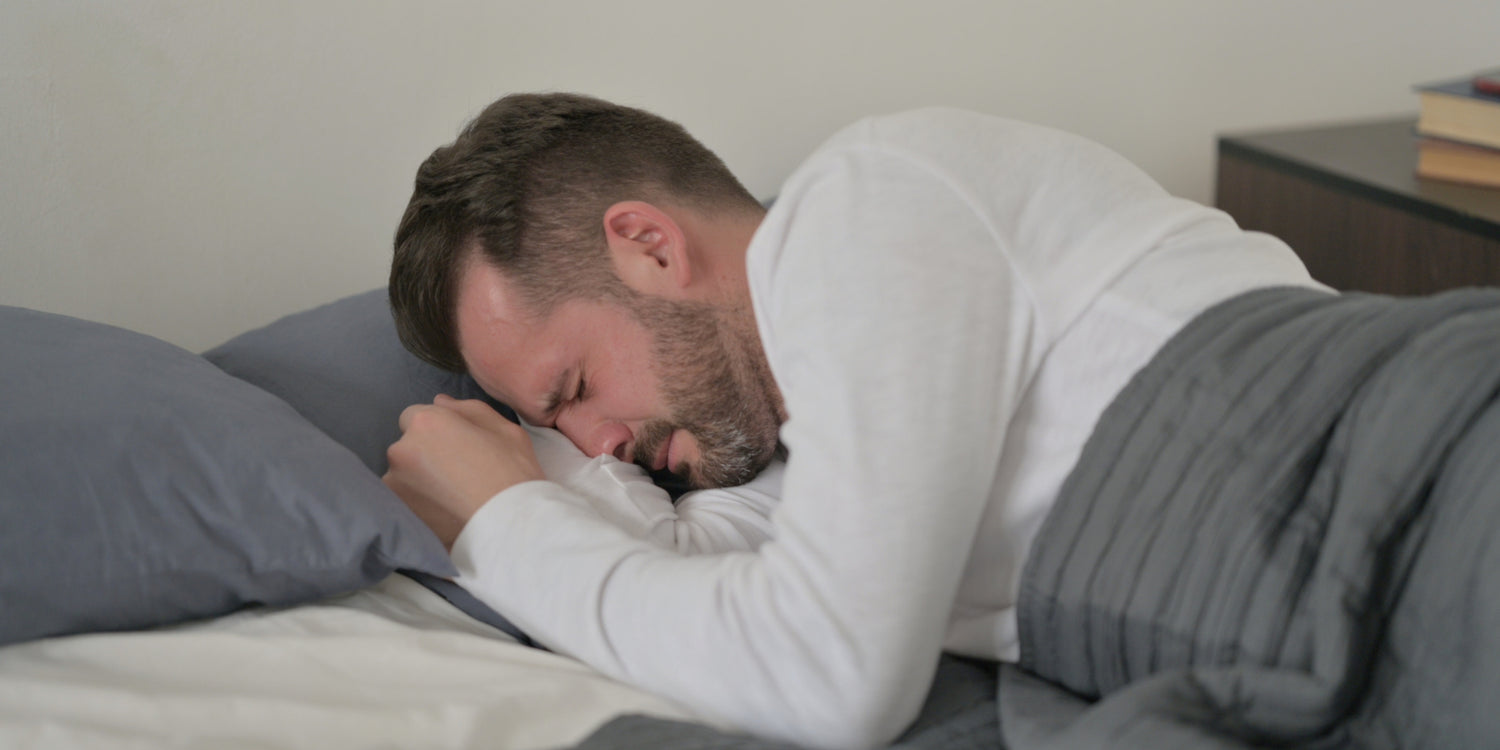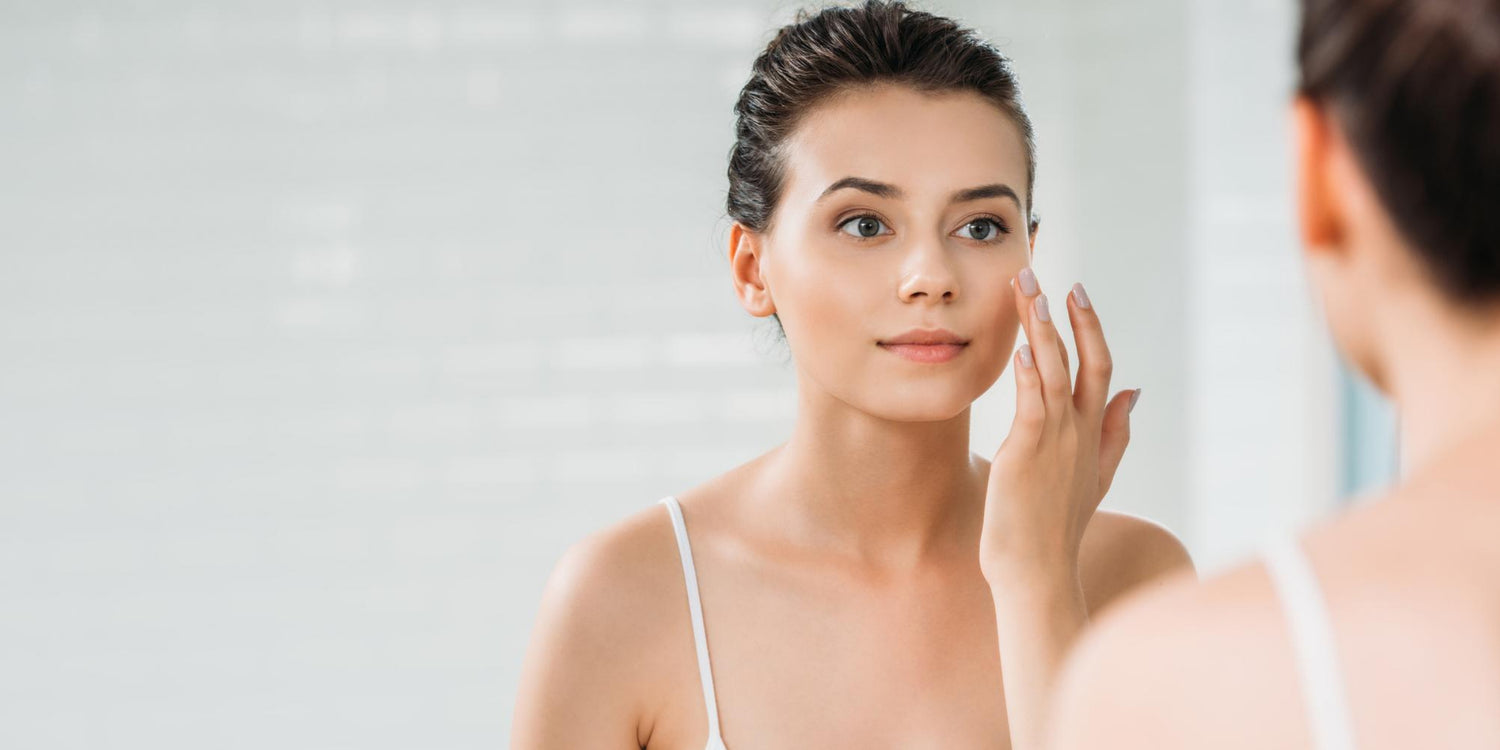5 Tips on Relieving Dry Eyes with Reflexology

Stay tuned to our latest news
Dry eyes can be a frustrating and persistent condition that affects people of all ages. Whether caused by environmental factors, excessive screen time, or underlying health issues, the discomfort and irritation can significantly impact your daily life. So, if you're tired of relying solely on artificial tears and looking for alternative ways to find relief, that's where reflexology comes in.
Reflexology is an ancient practice that involves applying pressure to specific points on the feet, hands, or ears to stimulate the body's natural healing response. By targeting these reflex points, reflexologists believe they can restore balance and harmony to various organs and systems within the body, including the eyes.
With that said, let's go through five valuable tips on how to relieve dry eyes using reflexology. These tips are designed to complement existing treatments and provide you with a holistic approach to managing dry eyes.
So, sit back, relax, and let us take you on a journey of discovery as we explore the world of reflexology and its potential to bring relief and rejuvenation to your dry eyes.
What Are Dry Eyes?

Dry eyes, also known as dry eye syndrome or dry eye disease, is a common condition that occurs when the tears in our eyes are not able to provide adequate lubrication. Tears play a crucial role in maintaining the health and comfort of our eyes, keeping them moist, reducing the risk of infections, and ensuring clear vision. When the eyes do not produce enough tears or the tears evaporate too quickly, it can lead to dryness, irritation, and discomfort.
Dry eyes can be caused by various factors and understanding them, alongside their symptoms and treatment options, is essential in managing this condition and preventing further complications.
What Are the Symptoms of Dry Eyes?
Dry eyes occur when the eyes do not produce enough tears or when the tears evaporate too quickly. The most common symptoms of dry eyes include sore, tired, burning, or itching eyes, as well as watery or dry eyes. These symptoms can range from mild to severe and can affect one or both eyes.
In addition to the primary symptoms, there are several potential additional symptoms that individuals with dry eyes may experience. Headaches are a common accompanying symptom, often caused by eye strain and the constant effort to focus and compensate for the lack of moisture on the eyes' surface. Neck and shoulder pain can also occur, as individuals with dry eyes tend to strain their neck and shoulder muscles in an attempt to alleviate eye discomfort.
Sensitivity to light, also known as photophobia, is another potential symptom of dry eyes. This sensitivity can make it challenging to be in bright environments and may cause an avoidance of sunlight or bright indoor lighting. Trouble concentrating and a feeling of being unable to keep the eyes open are also possible symptoms. The constant discomfort and irritation of dry eyes can make it difficult to concentrate on tasks, especially those that require visual focus.
In conclusion, the symptoms of dry eyes include sore, tired, burning, or itching eyes, as well as watery or dry eyes. Additional symptoms may include headaches, neck and shoulder pain, sensitivity to light, trouble concentrating, and a feeling of being unable to keep the eyes open.
What Causes Dry Eyes?
One of the primary causes of dry eyes is a decrease in tear production. This can be a result of aging, hormonal changes, or certain medical conditions such as Sjögren's syndrome or autoimmune diseases. Inadequate tear production can also be caused by certain medications like antihistamines, decongestants, or antidepressants.
Another factor that can contribute to dry eyes is the rapid evaporation of tears. This may be caused by environmental factors such as dry climates, wind, or air conditioning. Exposure to smoke, dust, or allergens can also lead to increased tear evaporation. Additionally, prolonged use of digital devices like computers and smartphones can reduce blink rate, leading to faster tear evaporation.
Dry eye syndrome can have a significant impact on reading and computer use. Insufficient tear lubrication can result in blurred or fluctuating vision, making it challenging to focus on text or screens. Eye fatigue, redness, and increased sensitivity to light are common symptoms experienced during prolonged reading or computer use.
Moreover, individuals with dry eyes may also feel discomfort in dry environments. Air-conditioned rooms, airplanes, and arid climates can exacerbate the symptoms of dry eyes, causing irritation, stinging, and a gritty sensation.
What Is Reflexology?

Reflexology is a therapeutic practice that involves stimulating specific reflex points on the feet, hands, face, and ears to bring balance and harmony to the body, energy, and mind.
By applying pressure to these reflex points, it aims to stimulate the body's natural healing processes and restore balance to the corresponding organs or areas of the body. The concept behind reflexology is based on the belief that these reflex points are connected to different parts of the body through energy pathways.
This ancient practice has been used throughout history in various cultures and has stood the test of time due to its effectiveness in promoting overall well-being. Reflexology is considered a holistic treatment as it addresses not only physical ailments but also takes into consideration the mental and emotional aspects of a person's health.
The practice of reflexology continues to gain popularity today as more people seek natural and alternative approaches to improve their health. Whether used as a standalone therapy or in conjunction with other treatments, reflexology offers a non-invasive and drug-free option for addressing various health concerns.
Can Reflexology Relieve Dry Eyes?

With the increasing reliance on digital screens and prolonged periods of screen time, dry eyes have become a common complaint. The discomfort and irritation caused by this condition can significantly affect daily activities. While there are several treatments available, reflexology has gained attention as a potential remedy for dry eyes.
What Are the Benefits of Using Reflexology for Treating Dry Eyes?
One of the primary benefits of using reflexology for dry eyes is its ability to enhance blood circulation. By applying gentle pressure to specific reflex points around the eyes, reflexologists can stimulate the blood vessels, leading to increased blood flow to the area. This increased circulation helps in delivering essential nutrients and oxygen to the eyes, promoting overall eye health.
In addition to improving blood flow, ocular reflexology massages also stimulate lymphatic circulation. The lymphatic system plays a crucial role in removing waste and toxins from the body, including the eye area. By enhancing lymphatic drainage, reflexology can reduce puffiness, dark circles, and bags under the eyes, which are common symptoms of dry eyes.
Moreover, reflexology has shown potential in alleviating various eye disorders. Dry eyes can occur due to various reasons, including inflammation or dysfunction of the tear glands. Reflexology can help in reducing inflammation and supporting the normal functioning of these glands, thereby providing relief from dry eye symptoms.
5 Tips for Relieving Dry Eyes with Reflexology

Dry eye syndrome is a common condition caused by insufficient tear formation or poor tear quality, leading to discomfort and irritation. Reflexology, an alternative therapy that focuses on specific points on the feet, hands, and ears, can be an effective way to prevent and relieve dry eyes. Here are five tips for relieving dry eyes with reflexology:
- Daily Self-Massage of the Eye Reflex Points: Begin by sitting comfortably and relaxing your body. Gently massage the reflex points corresponding to the eyes, located on the pads of your thumbs. Apply firm but gentle pressure in a circular motion for about one minute on each thumb. This stimulates blood circulation and helps relieve eye strain.
- Stimulate the Sinus Reflex Points: Press and hold the reflex points for the sinuses, located on both the tips of your middle and index fingers. Apply steady pressure for 30 seconds while taking slow, deep breaths. This technique can help reduce sinus congestion, which is often associated with dry eyes.
- Massage the Reflex Points for the Tear Ducts: Place your index fingers on the reflex points for the tear ducts, which are located at the inner corners of your big toes. Apply gentle pressure and massage in a circular motion for a couple of minutes. This can help stimulate tear production and relieve dryness.
- Target the Kidney Reflex Points: The kidney reflex points, located on the soles of your feet, are also connected to eye health. Apply pressure on these points by using your thumb, knuckles, or a reflexology tool. Massage them for a few minutes to enhance kidney function and promote overall eye health.
- Incorporate Relaxation Techniques: Stress and tension can exacerbate dry eyes. Practice deep breathing exercises, meditation, or other relaxation techniques to reduce stress levels. This can help relax your entire body, including your eyes, and improve tear production.
Remember, reflexology is not a substitute for medical treatment. If you have chronic dry eyes or any underlying health conditions, it's important to consult with a healthcare professional. However, incorporating these simple reflexology tips into your daily routine may complement your existing treatments and provide relief from dry eyes.
Takeaway
Dry eyes can be frustrating and impact daily life. Reflexology, an ancient practice, applies pressure to specific points on the feet, hands, or ears to stimulate the body's healing response. It targets reflex points connected to organs, including the eyes. Symptoms of dry eyes include sore, tired, burning eyes, and watery or dry eyes. Reflexology enhances blood and lymphatic circulation, reduces inflammation, and promotes overall eye health. Tips for relieving dry eyes with reflexology include self-massaging eye reflex points, stimulating sinus reflex points, massaging tear duct reflex points, targeting kidney reflex points, and incorporating relaxation techniques. However, before anything, remember that Reflexology should not replace medical treatment, but it can complement existing treatments.
Renpho Health Tips
-

Say Goodbye to Eye Infections: Choosing the Right Eye Mask for Optimal Eye Health
March 4, 2024
Read more >
-

Basking in Green: Exploring the Benefits of Forest Bathing
March 3, 2024
Read more >
-

Tears in Dreams: Unraveling the Mystery of Nocturnal Crying
February 28, 2024
Read more >
-

Embracing Aging: Honoring the Graceful Passage of Time
February 27, 2024
Read more >
-

Loving Your Skin: Building Your Skincare Routine for a Healthy Glow
February 21, 2024
Read more >




